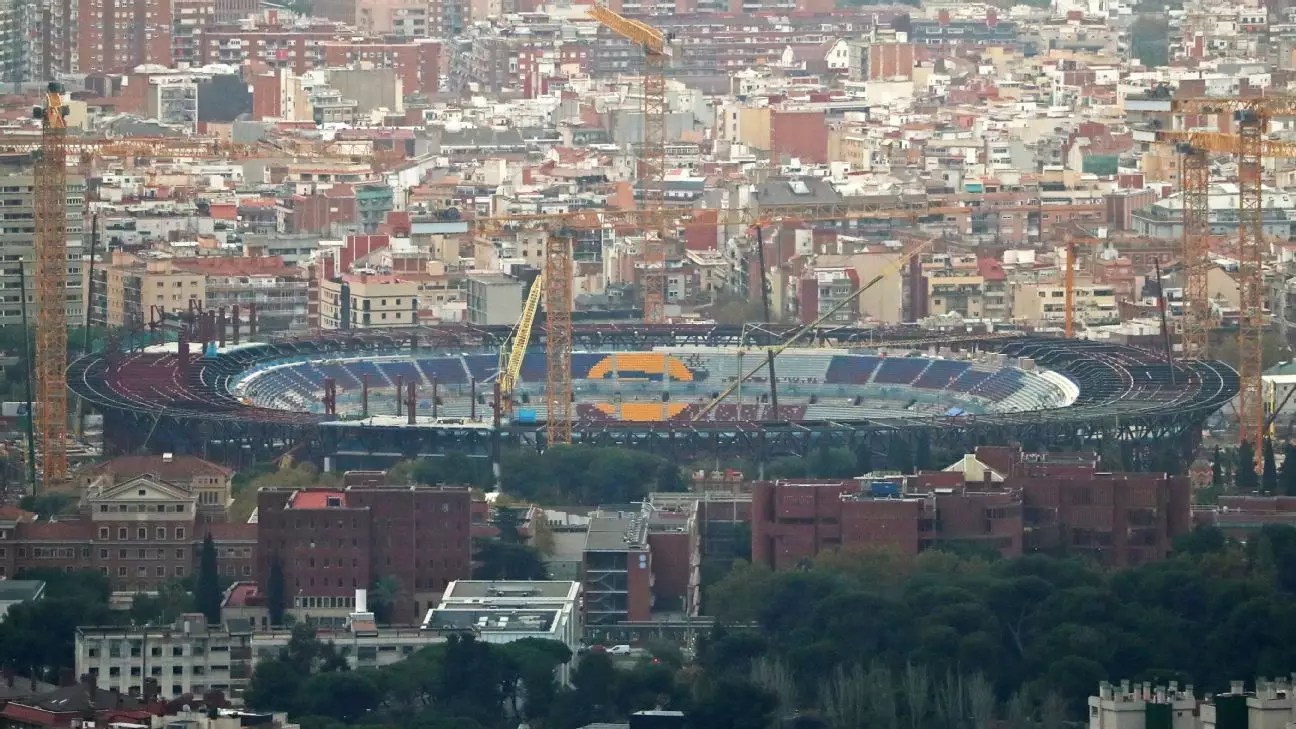Barcelona’s aspirations to return to their iconic home, Spotify Camp Nou, have encountered substantial obstacles that raise questions about the timeline initially set by the club’s leadership. Originally, the club aimed to make their homecoming by November 2023, coinciding with their 125th anniversary. However, the reality of ongoing redevelopment has led to a postponement of these plans, encapsulating a sense of urgency that contrasts sharply with the slower pace of construction.
President Joan Laporta has been vocal about the club’s intention to return by March 2024, a strategically chosen date that aligns with the Champions League knockout stages. Yet, behind this optimism lies a series of delays exacerbated by unexpected findings in the renovation process. The second tier of the stadium has necessitated more extensive work than initially foreseen, compounding the challenges faced by the club as they navigate the complexities of modernizing such a historic venue.
One of the primary technical challenges facing Barcelona is the installation of a new playing surface. The pitch requires considerable preparation, with estimates suggesting it could take up to three months to install correctly. Currently obstructed by construction machinery, this surface has yet to be laid, further complicating the timeline for a potential return. This aspect emphasizes the intricate nature of such renovations—where every detail must be meticulously planned to meet the standards expected of top-tier football facilities.
The situation raises pertinent questions: How resilient can a club remain in the face of unforeseen hindrances? Barcelona’s management needs to balance public expectations with the practical realities of construction, maintaining transparency while ensuring that the project remains on course.
Laporta’s focus on a March deadline is particularly interesting given UEFA’s regulations regarding venue changes for home matches during the Champions League. Once a team plays a knockout match at a particular venue, they are locked into that location for the remainder of the tournament. This limitation creates a narrow window of opportunity for Barcelona to reintegrate Camp Nou as their home ground if they wish to do so for European competition.
Simultaneously, the club has managed to extend their lease at the Olympic Stadium, where they have operated since abandoning Camp Nou in 2023. This adaptability is indicative of strategic planning, allowing them room to maneuver while keeping their options open should further delays arise.
Barcelona’s vision for the future of Camp Nou is monumental. By the time the renovations are completed, the stadium is expected to accommodate around 105,000 spectators, thereby claiming the title of the highest-capacity stadium in Europe. This ambitious undertaking not only signifies a physical expansion but also reflects the club’s ambitions to reclaim its status within European football.
As the club forges ahead, the initial narrative of a quick return to Camp Nou is turning into a more complex story of resilience and strategic foresight. With the prospect of ongoing renovations extending well into 2026, the experience of the players and fans will shape new traditions while cultivating an unwavering spirit that has characterized FC Barcelona through the decades. The delayed return, rather than being merely an inconvenience, could signal a turning point in Barcelona’s storied legacy.


Leave a Reply